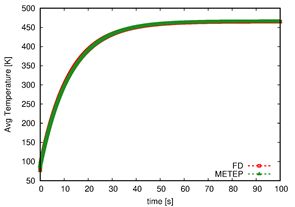Scientists from the Institute of Electrical Engineering of the Slovak Academy of Sciences (IEE SAS) have introduced a new electro-thermal modeling method for superconductors, offering higher accuracy and efficiency compared to previously used approaches. This method, called METEP (Minimum Electro-Thermal Entropy Production), brings significant advantages over traditional methods. Unlike the traditional finite difference method, METEP is based on the variational principle, providing reliable calculations without the need for stabilization conditions. This allows for larger time steps and makes the method applicable to a wide range of geometries. “METEP has the potential to become an invaluable tool in the design of next-generation of superconducting motors and generators,” stated Enric Pardo, the lead researcher.
METEP has been successfully tested on a configuration of an oval (racetrack) superconducting coil made from REBCO tape in a short-circuit regime, which plays a crucial role in superconducting magnets and electric drives. The results not only confirmed the accuracy of this method but also provided new insights into the electro-thermal behavior of superconducting systems.
This research represents an important step towards more efficient utilization of superconductors in various technological applications. With this achievement, IEE SAS continues to contribute to the development of innovative solutions in power electronics and energy sectors.

the average temperature increase over time modeled using the new METEP method compared to the finite difference method
Link: https://ieeexplore.ieee.org/document/10075424
Authors: Enric Pardo, Anang Dadhich





